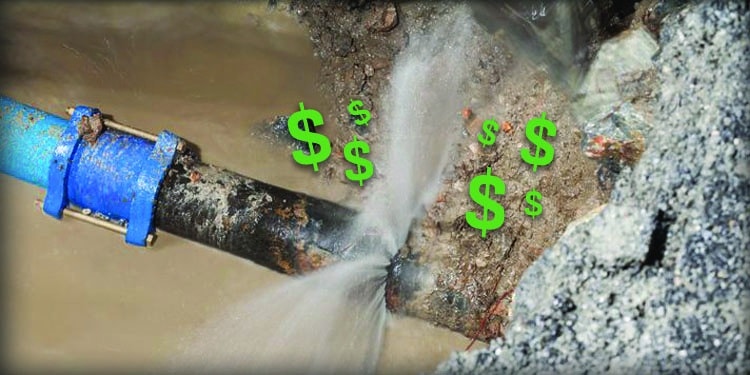Construction safety is a crucial aspect of the industry. If safety isn’t continually practiced, there
can be severe consequences. GPRS is dedicated to promoting safe construction practices, and
we want to inform and educate others on how to complete a safe site excavation.
What About 811?
Whenever breaking ground on a construction project, it’s a legal requirement that 811 services
are called to locate and protect public utilities. 811 services are often referred to by different
names depending on the state, such as Dig Alert, Digline, Onecall, etc. States provide a public
utility locating service free to anyone excavating to prevent public utility strikes. The contractor
involved is required to call 811 to avoid this subsurface damage.
But 811 is not a complete solution for subsurface utility locating.
Did You Know Privately-owned utilities account for almost 65% of all buried utilities in
the United States?
The challenge is that public utilities account for less than half of all the utilities under the ground. With 811 only providing information on public utilities, excavating without calling a private utility locator can be seriously dangerous, impacting your project’s time, budget, and
safety.
According to the Common Ground Alliance’s annual DIRT (Damage Information Reporting Tool) Report, there was $30 billion in damage to utility lines and other underground infrastructure in the United States in 2019. In addition, there were 532,000 excavation-related damages. More importantly, since 2000, there have been more than 2,000 injuries and 400 deaths because of insufficient ground disturbance policies at construction and other job sites.
There is a severe problem in this country regarding damaging underground infrastructure. This
issue is not only costly from a budgetary perspective, but it can also cost innocent lives.
What Can a Utility Strike Cost You?
These are average costs to repair specific utilities after they are damaged by careless
subsurface excavation:
• Electric Line – $4,905
• Telecom Line – $3,022
• Cable TV Line – $2,190
• Water Line – $3,003
• Sewer Line – $5,163
• Natural Gas Line – $5,914
These are only direct costs. One also needs to consider indirect costs like loss of revenue from
shutdowns, medical bills for injured employees, fines and fees, and engineering costs. Leading
causes of unwanted damage can all be attributed to the lack of a ground disturbance policy.
However, based on the root cause analysis, most companies don’t even bother to dial 811. This
means the typical construction site is a virtual minefield of potential hazards.
Are You One of the 65%?
One report from McKinsey and L.E.K. Consulting revealed that 65% of the time, companies that
could benefit from using GPRS for utility location services do not do so. Companies instead rely solely on 811 reports or have no locating service at all. The simple fact is that using the services of GPRS could potentially save you millions. With GPRS on the job, you are on time, on budget, and safe.
- Call 811 and ensure a positive response. Locating all public utilities provides the
foundation for the rest of the process. - Research records and Ask key personnel at the facility for knowledge on subsurface
information. - Walk the site to look for above-ground indications of the presence of utilities and other
buried infrastructure. - Review existing drawings, plans, or maps to provide additional information on
subsurface cables, pipes, lines, etc. - Hire a private utility locator like GPRS to conduct a thorough site investigation.
a. Ensure that the private utility locator uses multiple locating technologies. At
GPRS, we use ground penetrating radar, electromagnetic pipe locators, and
other tools. We take advantage of these tools’ strengths, creating necessary
confirmation when locating subsurface infrastructure.
b. Certify that the private utility locator provides you with a permanent record of
their findings. Typically, this includes a comprehensive map or report and
supporting documentation. - Have a pre-excavation meeting with all involved parties to compare the 811 results,
existing maps, and the private utility locate results.
How to Guarantee Your Sites are Protected
GPRS avoids mis-markings and missed utilities by ensuring that our Project Managers are highly
trained and SIM certified.
SIM stands for Subsurface Investigation Methodology. SIM is an industry-standard that ensures everyone is scanning for subsurface damage prevention adequately. According to SIM, all Project Managers must be equipment experts. Professional locating contractors must use multiple locating technologies in line with the SIM standard. Additional training requirements are also specified in the SIM specification. To be SIM certified, an operator must complete a minimum of 8 weeks of field mentoring and two weeks of classroom training. Additionally, SIM requires our Project Managers to be proficient in the most effective methodologies. Having an industry standard that guides utility locators is essential. While SIM certification is not mandatory for all private utility locators, some construction firms require that utility locators are SIM certified to maintain a standard of procedure and quality.
When Is the Best Time to Contact a Utility Locating Service?
If you need underground locating services, call GPRS. For many construction projects, knowing
the location of subsurface utility lines or water pipes is crucial to assist with the placements of
structures, supports, foundations, and digging tools required for the excavation process. A utility locating contractor, such as GPRS, can help project planners from pre-planning to later building stages. Additionally, utility detection services help keep both workers and homeowners safe and keep your project on time and on budget. GPRS can locate underground gas lines, pipelines, communications lines, electric lines, water lines, sewer lines, and voids. Often, we can have a utility locator on your property in hours. If you need underground utility locating services for your property or construction site, don’t wait. Contact!


